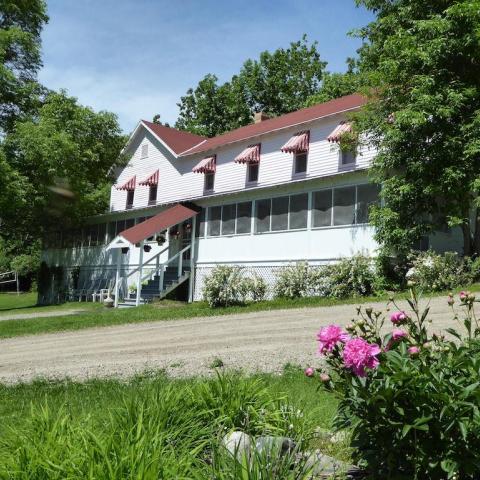
The rundown state of the Chateau at Oregon Caves National Monument and Preserve has landed it on a most endangered list/Friends of the Oregon Caves and Chateau file
A national park lodge built to blend into the deep Oregon woods that surround it has stood silently since 2018 when structural issues forced its closure. While the National Park Service is working to stabilize the Chateau at Oregon Caves National Monument and Preserve, its condition has landed it on the National Trust for Historic Preservation's most endangered list.
The six-story, 23-room Chateau, a National Historic Landmark, was built in 1934. Planning for the Chateau's repair and rehabilitation project began more than 15 years ago, and while that planning has continued, delays have continually pushed things back and the charming inn has remained closed.
Part of the needed work is seismic stabilization, but there also are needs for safety and security upgrades, a new roof, accessibility issues, and other matters.
While some of that work is planned to be tackled, long-term plans for reopening the Chateau remain up in the air.
"Two task orders were awarded In September 2024 to study potential long-term options for future rehabilitation and to identify the priority requirements for stabilization while the Chateau is unoccupied," Park Service spokesperson Rachel Pawlitz said Wednesday. "The NPS has approved and is proceeding with the design of the stabilization phase which will address the highest priority deficiencies necessary to ensure the building is safe and maintainable during the anticipated period of non-occupancy.
"The approved scope for the current stabilization phase includes roof replacement, fire suppression upgrades, security improvements and structural repairs and seismic improvements to address some of the underlying structural deficiencies," she added. "In parallel, the NPS will continue to study options for a long-term rehabilitation solution."
The state of the Chateau convinced the Trust to place it on its 2025 list of Most Endangered Historic Places released Wednesday.
“Across the United States, compelling, meaningful historic sites are at risk, whether from natural disasters, underutilization, neglect, or lack of awareness,” said Carol Quillen, president and CEO of the Trust. “Each site on this year’s list has inspired passionate supporters from their surrounding communities to work together to save these cherished landmarks and repurpose them for the public, now and into the future. Their leadership shows the power of preservation to create stronger communities, energized local economies, and a healthier environment for everyone.”
Read About The Chateau's "Purely American Furniture"
In their book, The Complete Guide To The National Park Lodges, David and Kay Scott had this to say of the Chateau:
"The area offers good hiking and a tranquil setting that is ideal for individuals searching for peace and quiet. What a great place for a honeymoon! When is the last time you stayed in a lodge that had a small stream running through the dining room? The Chateau does, and you can hear the water ripple through as you enjoy a meal," they wrote.
As Traveler's Jennifer Bain wrote following a visit to the park last fall, "[T]he Chateau, as envisioned by landscape architect Arthur Peck, was designed by Grants Pass carpenter Gust Lium. “They call it 'Parkitecture,' which means that it looks like it grew up out of the ground,” Sue Densmore explains.
"Perched in a steep canyon next to the cave’s entrance and crossing a woodland ravine, the hotel used Port Orford cedar bark siding and marble from the cave to blend in with its surroundings. There were wooden balconies with forest views and a grand, two-sided stone fireplace in the lobby. Cave Creek was diverted to be a small waterfall that feeds a concrete pond outside the Chateau. Inside, Lium engineered a conduit to route the stream through the dining room."


 Support Essential Coverage of Essential Places
Support Essential Coverage of Essential Places






